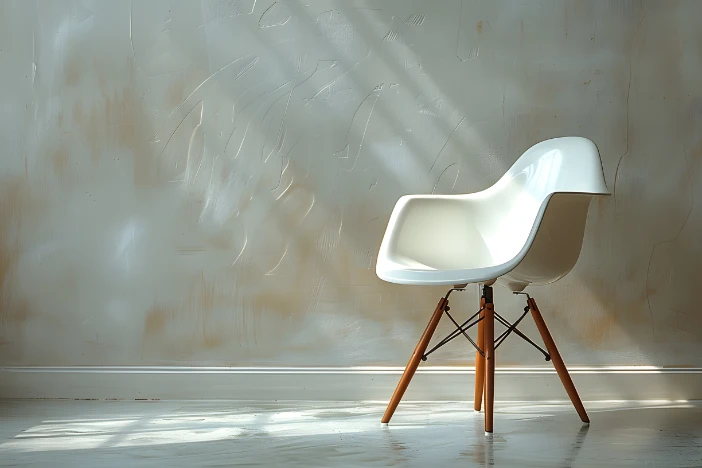
The first section of our comprehensive list of styles covers some of the most popular aesthetics with iconic features in both architecture and furniture design.
Abstract

Abstract interior design is where expressionist art meets home sweet “avant-garde.” Picture energetic spaces built on bold forms, wild asymmetry and a love for the unexpected—think Picasso if he tackled living rooms instead of canvases. While it shares roots with modern and contemporary style (hello, clean lines and less clutter), abstract dares to crank up the volume. Irregular forms and surprising layouts keep your eyes—and maybe your heart—on their toes.
Signature shapes swoop, bend and sometimes zigzag into your line of sight. Sofas become sculptures, and coffee tables appear plucked from a dream. Texturally, abstract interiors thrive on contrast. The mix might include lacquered wood so shiny you can check your hair, glass so clear you almost miss it, polished metal with a cool touch, plus molded plastic in forms Flash Gordon would envy.
Color is where this style ditches subtlety for showmanship. Imagine vivid blues, canary yellows and punchy oranges. These pops of color are often grounded by black or white, which creates drama and balance without veering into circus territory. Lighting is more than illumination—it’s performance art. Expect statement lamps or angular pendants that cast shadows as expressive as a Broadway lead.
Icon status goes to Vladimir Kagan’s Serpentine Sofa (seating, or sculpture?) and Pierre Paulin’s Ribbon Chair—flashy, fabulous, never boring. Designers Karim Rashid and the late Zaha Hadid bring futuristic flair to this aesthetic with flowing forms and bold visions. Abstract interiors are perfect for anyone who wants their home to feel both modern and totally, unapologetically unique.
African

African design is where soul meets soil. The aesthetic is inspired by the continent’s landscapes, history and creativity. It’s as down-to-earth as it gets and connects you to nature in ways that feel both wild and polished. Surfaces are textured and full of character, like those vintage jeans you just can’t throw out because they keep looking cooler every year.
This style comes to life with hand-carved woods like mahogany or cedar, turned into stools, low tables or artsy chairs. You’ll find woven rattan and braided grasses in everything from headboards to hanging lights. Leather sneaks in too (bold and rugged, not shiny and fancy), while textiles bring the wow factor. Kuba cloth, mudcloth and kente fabric all add meaning and flair.
The colors? They borrow from a safari sunset: rich clay reds, golden oranges, earthy browns and ochres, balanced with soft whites and taupes. Prefer going barefoot? You might find stained concrete or terracotta floors covered with jute runners, sisal rugs or maybe a zebra hide for some extra attitude.
Shapes stay relaxed and organic. The lines are simple but never stiff, taking cues from crafts handed down over generations. The Triplolina Chair, often seen draped in mudcloth, mixes African roots with a bit of global cool. Designers like Cheick Diallo and Jomo Tariku are making African design look so sleek, their pieces could totally fit in a Marvel villain’s lair (if that villain had style).
American Colonial
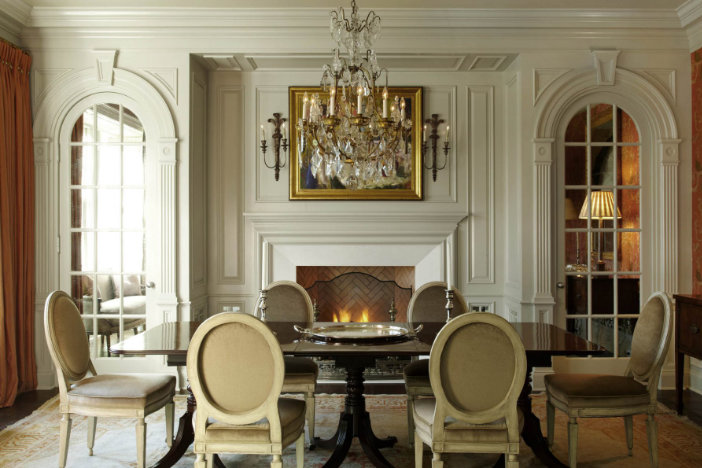
American Colonial style is like stepping into a time machine, if that time machine also happened to stop for apple pie and sturdy woodwork along the way. This style is all about honest craftsmanship and no-nonsense elegance, echoing early American roots with a wink to old-world Europe. There’s a practical side, sure, but it’s never short on charm.
Earthy, muted colors like slate blue, latch-key gray and soft cream ground the palette. Think George Washington meets Martha Stewart, minus the cherry tree drama. Surfaces come aged and full of character—oil-rubbed bronze, timeworn wood and antique brass finishes read cozy rather than fussy. If these walls could talk, they’d probably use their inside voices.
Furniture is where Colonial sings, or, more accurately, harmonizes. Built from cherry, maple, hickory or elm, pieces feel rock-solid. Spindle-back and Windsor chairs line up neatly next to trestle tables and towering highboys, each one sporting carved details or turned legs that show off woodworking chops with a bit of flair. Fabrics favor hard-wearing toiles, ticking and classic florals. These textiles resist spills and style fatigue alike. Subtle colonial wallpapers tiptoe into the mix, never shouting but always getting noticed.
Lighting leans classic and atmospheric. Brass or copper lanterns, wall sconces and candelabra chandeliers offer a warm, flickering welcome. Drawer pulls and knobs in brass elevate cabinetry without going full Gatsby. Forms love symmetry—everything is balanced, well-proportioned and true to its heritage.
You’ll spot icons like the adaptable Windsor chair and American takes on the Chippendale cabinet (less Downton, more New England). Influences from early makers like Duncan Phyfe keep things rooted in history, while the style’s timeless mix of order, nostalgia and substance stays forever on trend—even if the closest you get to colonial is binge-watching Hamilton on a Friday night.
Amish
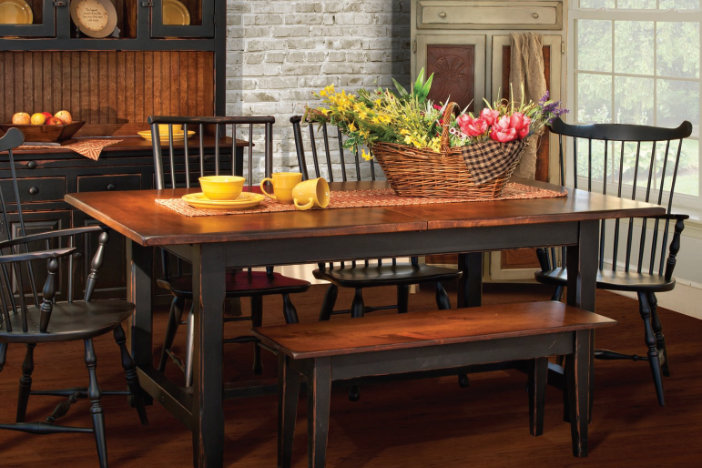
Amish design is the homey equivalent of a warm loaf of homemade bread. It’s simple, grounded and always authentic. This style is all about living intentionally, celebrating solid craftsmanship over fleeting trends. Step into an Amish-inspired space and you’ll notice a kind of graceful modesty. There’s elegance here but it never tries too hard.
Form is straightforward with a quiet confidence. Furniture lines are clean, proportions are well-balanced and there’s not a whiff of fuss or frills. Picture spindle-back chairs gathered around a sturdy trestle table or a blanket chest that could probably outlast your next four couches put together. Amish makers employ time-honored joinery like dovetails and mortise-and-tenon. So, each piece is built for generations and not just Instagram likes.
Texture sings in the details: the satiny grain of cherry or the toasty warmth of oak, the weight of walnut or the light touch of maple. These natural woods, finished by hand, give off a mellow luster. You’ll find subtle design cues in Amish design. Arched crown molding, inset panels and gently flared legs are not flashy but just enough to catch the eye of anyone with an appreciation for honest craftsmanship.
Color palettes are unapologetically down to earth. Expect soft creams, gentle grays and deep browns, punctuated by black that’s used to anchor rather than overwhelm. Fabric, when used, is durable and never extravagant. Cotton or linen, usually in muted hues are common.
Lighting keeps things simple with gas lamp-style pendants, iron sconces or tin lanterns casting a mellow glow. The vibe is less “grand ballroom” and more “gather round for homemade pie.”
While Amish style is more community than celebrity-driven, certain hallmarks like the iconic plank-top dining table or the ever-reliable rocking chair have become symbols of good taste and solid roots. Design shines through the collective wisdom of generations. An Amish interior isn’t just decorated, it’s built to feel lived in, loved and maybe even a little unplugged from the rush of modern life. A little peace, quiet and plenty of substance—no barn-raising required.
Arabian
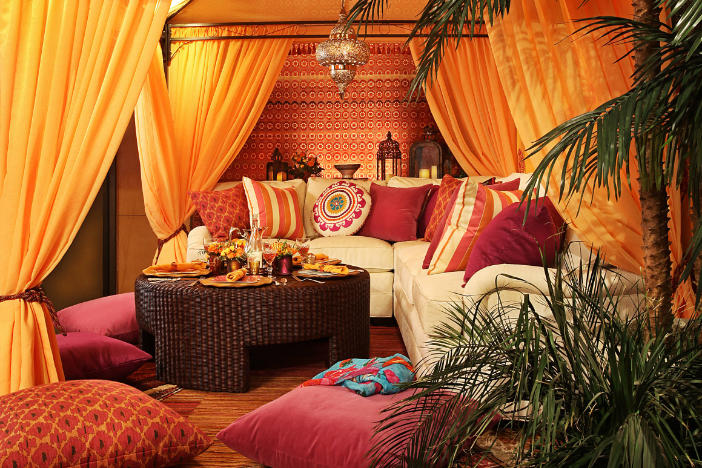
The Arabian aesthetic isn’t just about style. It’s about storytelling. Picture rooms that feel like a cross between Scheherazade’s palace and the chicest desert retreat on Instagram. The hallmarks? Forms like perfectly arranged majlis floor cushions and low, lounging sofas that invite you to get comfortable and stay awhile. Tables are rarely just tables; they’re ornate wood masterpieces, sometimes inlaid with Mother of Pearl that would make a pirate jealous.
Texture is huge. You’ll spot velvet, silk, leather, all jostling for attention with metallic trays, cut glass accents and woodwork so intricate it looks like it came straight out of Aladdin’s cave. Design details refuse to play wallflower. Rooms adorned with geometric mosaics underfoot and lavish drapes or rugs with swirling arabesques that would make even Escher do a double-take.
Color? Arabian palettes start cool and sand-kissed, then crank up the volume with jewel-like turquoise, pink, gold and bronze that make the space look like it raided Princess Jasmine’s wardrobe. Lighting isn’t just functional; it’s a statement, thanks to engraved metal lanterns that cast magical shadows across every surface.
Iconic pieces include the expanding majlis sofa and the ornate Mashrabiya screens—masters of privacy with a peek of lace-like mystery. Modern legends like Nada Debs and Hassan Hajjaj keep Arabian style fresh, blending the old and new with the kind of flair that would land them a cameo on a design reality show. Arabian design delivers maximum drama, total comfort and more than a little magic in every corner.
Art Deco
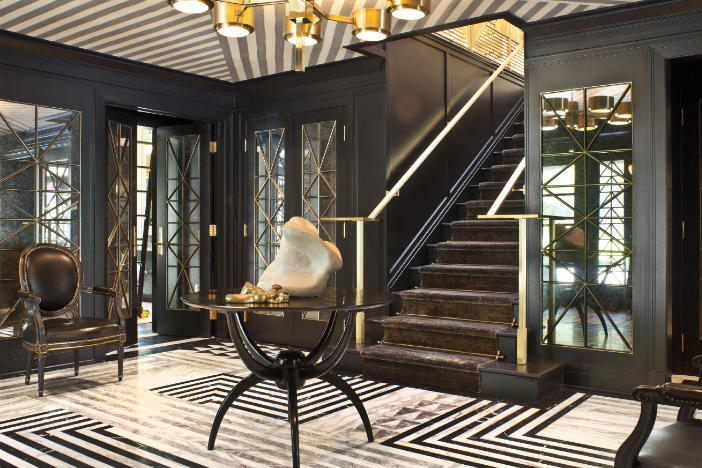
Art Deco is the design style that throws a Roaring Twenties party and always makes the guest list. Think Jay Gatsby meets the Jetsons. It was born in 1920s Paris but is just as comfortable strutting down Ocean Drive in Miami Beach today. The first thing you notice? Bold geometry and tidy symmetry. Forget wishy-washy, Art Deco goes all in with angles, curves and crisp shapes. Smooth, glossy surfaces—chrome, lacquered wood, glass and marble—set the base, but it’s the textural contrast that keeps things interesting. Velvet upholstery and lush, exotic woods like Macassar and ebony sidle up next to etched patterns and shiny metals, so there’s always a little drama in the room.
Color is a main character, not just background scenery. Picture deep emerald, sapphire and ruby popping against black and white, with gold or nickel accents for extra sizzle. Furniture? Oversized, sculptural and glamorous enough that James Bond would feel at home. Signature pieces include Eileen Gray’s cushy Bibendum Chair—which looks a bit like Michelin tried couture—and Jacques Ruhlmann’s sleek cabinets, the epitome of meticulous craftsmanship.
Lighting is pure eye candy. Expect geometric wall sconces, tiered chandeliers and dazzling lamps inspired by sunbursts or skyscrapers. These are more than just mood-setters—they’re conversation starters. The patterns don’t stop with upholstery. Chevrons, zigzags and fan motifs love to make guest appearances on rugs, walls and ceilings. Seriously, check out Miami Beach’s pastel Art Deco buildings for a full-on visual playlist.
Influential names like René Lalique, Le Corbusier and Cassandre set the stage for a look that’s never been shy about its love of lavish detail and Hollywood-worthy flair. Art Deco is here to stay, living proof that glamour truly never goes out of style.
Art Moderne
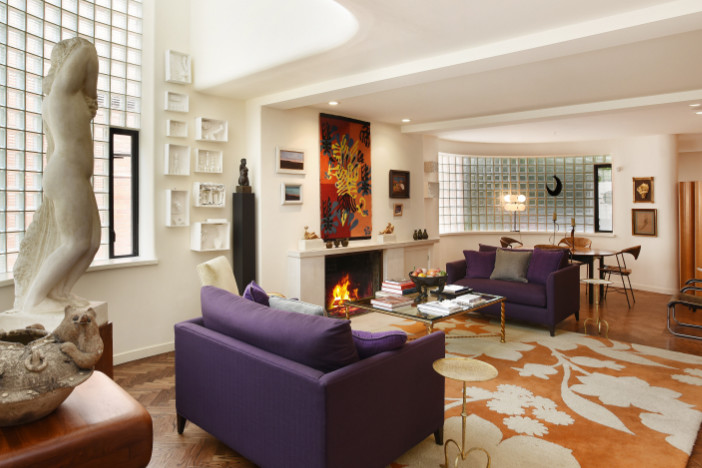
Art Moderne, also known as Streamline Moderne for those who like their design with a bit more wind in its hair, cruised onto the scene in the 1930s as a sleeker, smoother cousin to the bold angles of Art Deco. Think of it as Deco’s calmer and more aerodynamic sibling. It’s less glitz and more glide. This style is all about horizontal lines, rounded forms and a sense of movement that quietly whispers, “the future is now.”
Color palettes are chill. Whites, grays and muted neutrals dominate with the occasional high-contrast black or chrome for dramatic effect. Surfaces are glossy and clean; texture takes a backseat to smooth finishes like polished wood, glass and chrome. Fabrics might venture into velvets or leather but toned down and tailored, never frilly. Form comes first, and it’s often curved—doorways arch, corners soften and furniture flows in sinuous shapes like it’s been wind-tested.
Signature pieces? Imagine tiered coffee tables, low-profile sofas, cantilevered chairs and anything that nods to the streamlined beauty of a vintage train car. Lighting tends to be minimal but striking. Frosted glass, circular shades and sleek metal are popular choices.
Design heroes like Raymond Loewy, Paul Frankl and Gilbert Rohde brought Machine Age elegance to everyday life. They turned motion into mood, and suddenly even your side table had somewhere to be. Art Moderne interiors offer a kind of quiet glamour—confident, unfussy and effortlessly cool. If Art Deco is a jazz solo, Art Moderne is a slow dance with a skyline view.
Art Nouveau
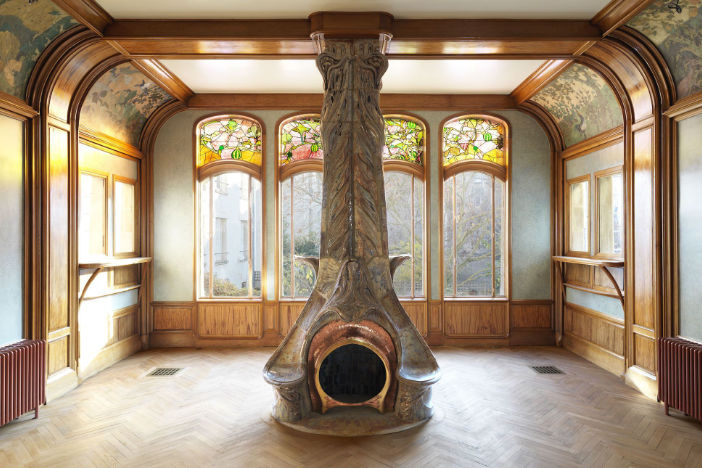
Art Nouveau is like the rebellious, romantic cousin of stiff and boxy Victorian design. It showed up in the late 1800s and said, “Let’s ditch the straight lines and go with something a little more… flowy.” This style leans heavily into curves, asymmetry and all things organic. Picture vines, waves and the kind of sinuous lines you’d expect if Mother Nature tried her hand at furniture making. Forget rectangles. Art Nouveau prefers whiplash curves and soft spirals that mimic flowers, insects and the human form with a touch of theatrical flair.
Textures and materials play a big role here. You’ll find lots of carved wood, shimmering stained glass, mosaics, marble and wrought iron—sometimes all in the same room. Art Nouveau doesn’t shy away from drama but keeps it elegant. Patterns often include dragonflies, lilies, swans and those dreamy, ethereal women with cascading hair who look like they belong in a Mucha poster (because they probably do).
The color palette? Muted and natural: sage greens, dusty plum, honey golds, soft blues. Very much earth vibes with a dash of moody romance. Furniture is sculptural but practical. Louis Majorelle’s botanical-inspired cabinets and Carlo Bugatti’s otherworldly chairs are absolute showstoppers. And if you’ve ever seen a Tiffany lamp glowing quietly in a corner, congratulations, you’ve experienced Art Nouveau lighting magic.
Designers like Hector Guimard and Victor Horta gave this style architectural legs—literally—like those fantastical Paris Métro entrances. Art Nouveau is where craftsmanship meets poetry, and honestly, it never really goes out of style.
Artisan
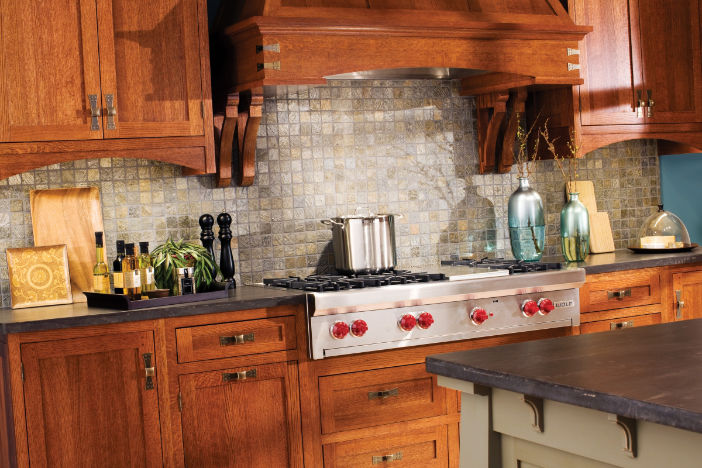
If you’ve ever swooned over a hand-carved wood chair or run your hand over furniture that feels like it has a soul, chances are you’ve met the Artisan interior design style. This look is all about craftsmanship – an antidote to mass production and cookie-cutter trends. Think slow design with a side of sawdust.
Colors come straight from the earth: rich terracotta, warm ochre, olive green and deep browns that feel like autumn got cozy and never left. You won’t find slick surfaces here. Instead, textures take center stage. For example, raw wood with visible grain, hammered metals, hand-glazed ceramics and stone that still feels like it came from, well, a mountain are commonly used. Form follows feel: curves tend to be soft and sculptural, often embracing asymmetry or natural imperfection.
Artisan-style furniture is the real deal. We’re talking solid walnut, oak or maple with joints on full display and not hidden behind glue and veneer. Iconic makers like George Nakashima and Sam Maloof practically wrote the book on this. Nakashima’s live-edge tables are practically poetry in tree form, while Maloof’s rockers are a masterclass in functional art.
Lighting is handcrafted too. The Artisan aesthetic features iron chandeliers, hand-thrown ceramic bases and blown glass pendants that look like something a wizard might conjure. Textiles are global but grounded. Woven rugs, embroidered pillows, maybe a block print here or there all tell their own unique story.
In the end, Artisan style is less about perfection and more about personality. It’s design with a heartbeat—and you won’t find that in a flat-pack box.
Arts & Crafts
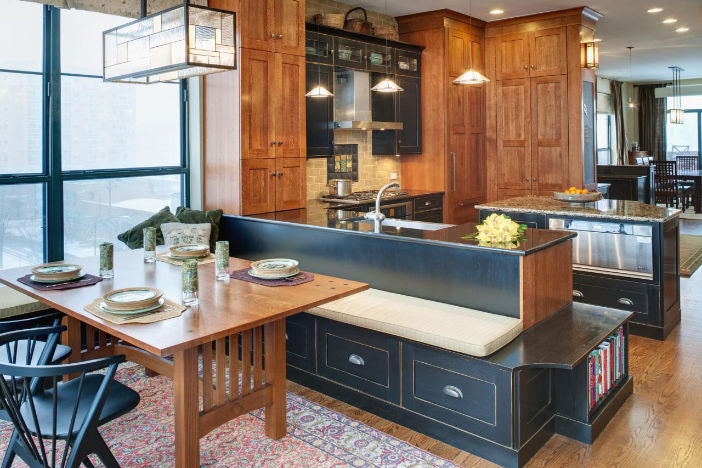
Arts and Crafts interiors are all about soul—specifically, the handcrafted kind. It was born in the late 1800s as a rebuttal to mass-produced Victoriana and the soulless march of machines. This style dove headfirst into natural materials, honest construction and craftsmanship that doesn’t try to hide the labor it took. Think of it as the Marie Kondo of its time, with less folding and more chiseling.
Furniture leans heavy (literally) into sturdy, rectilinear forms. Solid oak and quarter-sawn mahogany rule the roost. Joinery is exposed like it’s proud of its joints and it should be. Gustav Stickley’s mission-style chairs and heavyweight sideboards are probably the Tom Hanks of the movement: classic, dependable and universally admired.
Palette-wise, it’s as if Earth took over the paint job—sage greens, burnt umber, warm gold, soft clay. Everything feels grounded and calming, like a long exhale. Texture comes through hammered copper, hand-tooled leather, stained glass and artisanal tile that looks too pretty to step on but begs you to anyway. Lighting is moody in the best way, with mica or stained glass shades casting cozy amber glows, even if it’s raining outside.
Built-ins are a big deal. Window seats, bookcases and cabinetry feel like part of the home’s bones, not afterthoughts. Behind the philosophy were big names like William Morris, Charles Robert Ashbee and Barry Parker, who basically said, “Let’s make things beautiful and useful.” Mission accomplished.
Asian
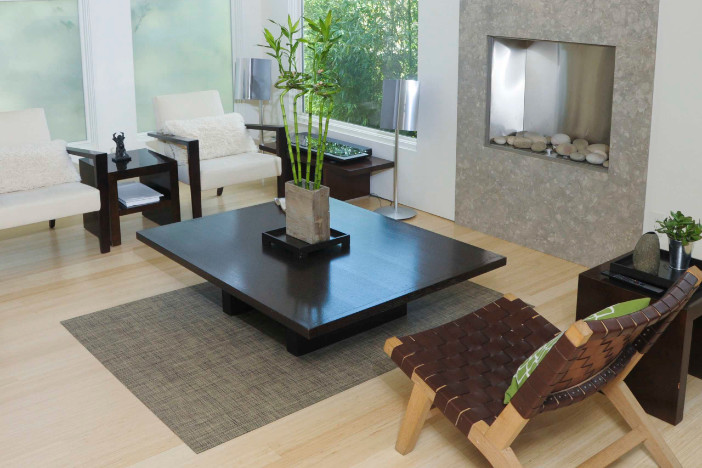
Asian interior design is basically a home’s version of a yoga retreat. It’s calm, a touch mysterious, and always ready to make you look like you’ve reached inner peace (or at least figured out where your keys are hiding). Drawing from Japanese, Chinese and Southeast Asian traditions, this style is the cool, collected guest at the decor party. Everything’s kept low. Platform beds, floor cushions and simple wood tables make it feel like the space wants you to linger over tea. It’s minimal but never boring; every piece seems like it landed in the right spot with the grace of a well-placed bonsai.
Nature’s running the show here. Warm woods, smooth stones, bamboo, rice paper and silk give off major spa-day-for-your-house vibes. Bonsai trees and clusters of bamboo act like little zen coaches and even a pebble or water feature can quietly dial up the tranquility. The color scene sticks to earth tones: chill browns, creamy whites, soft grays and touch-of-green moments that would make your plant-loving friends jealous. When deep reds or golds show up, it’s just enough to keep things interesting, not overwhelming.
This style’s not all about good looks. Storage benches, hidden ottomans and sneaky built-ins mean even your mess is in on the serenity act. Handwoven rugs and silk cushions add a layer of luxury that whispers, not shouts. Lighting stays soft with paper lanterns and wood lamps that practically demand golden hour selfies. Pieces like the Ming chair and Japanese tansu chest prove storage can be both practical and iconic. Designers like Koichi Futatsumata and Shigeru Uchida keep the look fresh, blending tradition with a dash of modern cool. Asian interiors? They don’t just look zen—they help you feel it.
Guide Sections
References
- Curtis, J. R. (1982). Art deco architecture in Miami Beach. Journal of Cultural Geography, 3(1), 51-63.
- Cogdell, C. (2010). Eugenic design: Streamlining America in the 1930s. University of Pennsylvania Press.
- Banham, J. (Ed.). (1997). Encyclopedia of interior design. Routledge.
- Rodel, K. P., & Binzen, J. (2003). Arts & crafts furniture: from classic to contemporary. Taunton Press.


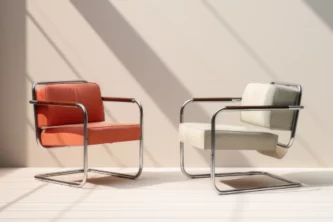
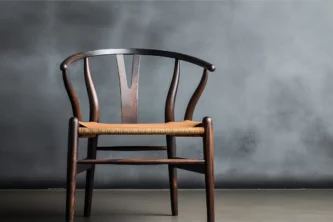
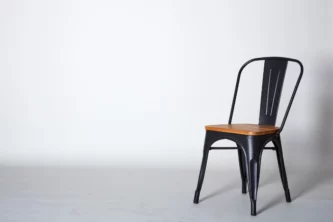
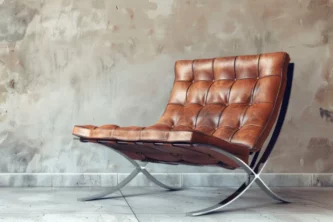
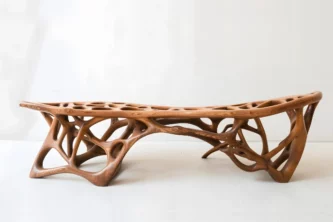


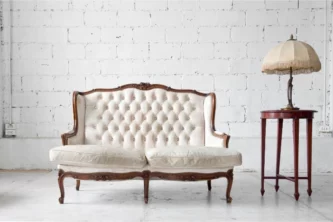




Leave a Reply